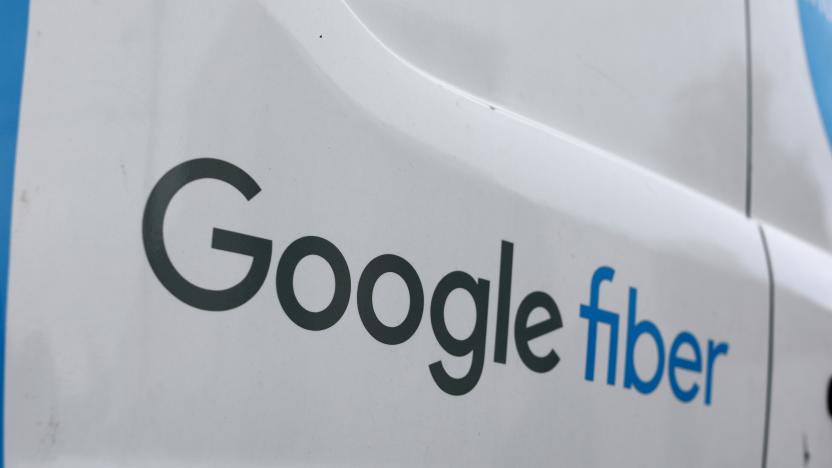20Gbps
Latest

Google's superfast 20Gbps Wi-Fi 7 Fiber plan costs $250 a month
If you've been thinking about hosting your own mini data center or need to stream 1,333 Netflix 4K programs at once, Google Fiber has the answer.

ASUS first to arrive with motherboard packing Intel's 20Gbps Thunderbolt 2
The ink is still fresh on Intel's formal blessing of Thunderbolt 2, and as promised, there's already a product on the market from perennial early bird ASUS. The Z87-Deluxe/Quad ATX is the first motherboard to pack the tech, which combines four of the original 10Gbps Thunderbolt channels into two bi-directional 20Gbps ports. That's four times the speed of USB 3.0 if you're keeping score at home, allowing two 4K displays to be driven at once, or faster-than-SATA-6 SSD speeds, for instance. Otherwise, it's as well-equipped as you'd expect from a bleeding edge mainboard, with 4th-gen Intel (Haswell) CPU support, 10 SATA-6 ports, 8 USB 3.0 ports, and 3 PCIe 3.0/2.0 x 16 slots. There's no pricing or availability yet, though Thunderbolt-equipped motherboards tend to be expensive. Still, if you wear the "early adopter" name-tag with pride, hit the PR after the break.

UK scientists developing lower-cost 20Gbps broadband, 40Gbps on the cards
Imagine a world where you can download 20 full-length movies in a second. Well, that's a reality a team of scientists based in Bangor, Wales are fighting for. They are researching ways of cramming more data down fiber-optic cables and negating "dispersion" (the deterioration of data when carried over longer distances at increased rates). Previous attempts to solve the issue have focused on more fibers, more lasers and other signal-boosting techniques. The team in Bangor are focusing their attention on existing Optical Orthogonal Frequency Division Multiplexing technology. By developing a method to convert data into electrical waves, and then into optical data, which can be decoded at the either end with their proprietary system. While the 20Gbps speeds they are working with are far from unheard of, the key is making them practical and accessible to consumers, without expensive new infrastructure. The next steps are to look at ways of commercializing the technique, but the scientists think there's still potential for improvement, believing speeds of up to 40Gbps being possible, meaning fast connections that can multitask.

Seed-sized A*STAR antenna could open the door to 20Gbps wireless
Antennas have often capped the potential speed of a wireless link -- the 450Mbps in modern 802.11n WiFi routers is directly linked to the use of a MIMO antenna array to catch signals more effectively, for example. That ceiling is about to get much higher, if A*STAR has anything to say about it. The use of a polymer filling for the gaps instead of air lets the Singapore agency create a 3D, cavity-backed silicon antenna that measures just 0.06 by 0.04 inches, roughly the size of a seed on your hamburger bun, even as it increases the breakneck pace. The new antenna generates a signal 30 times stronger than on-chip rivals at an ultrawideband-grade 135GHz, and musters a theoretical peak speed of 20Gbps -- enough that 802.11ac WiFi's 1.3Gbps drags its heels by comparison. Before we get ahead of ourselves on expecting instant file transfers at short distances, there's the small matter of getting a chip that can use all that bandwidth. Even the 7Gbps of WiGig wouldn't saturate the antenna, after all. Still, knowing that A*STAR sees "immense commercial potential" in its tiny device hints that wireless data might eventually blow past faster wired standards like Thunderbolt.


